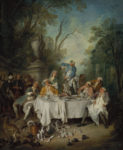 The Kimbell Art Museum in Fort Worth, Texas, has invited the roguiest of the rogues to use his legendary powers of seduction on its visitors. Casanova: The Seduction of Europe uses the life of Giacomo Casanova, adventurer, memoirist and lover extraordinaire, as the backbone of an exhibition on 18 century European fine and decorative arts. The biggest events of his life provide the chronological underpinning for the display of material culture from his time and society. More than 200 paintings, sculptures, piece of furniture, silver, porcelain boxes, metal objects, stylish period outfits and musical instruments from elegant palaces and salons of mid-18th century Europe.
The Kimbell Art Museum in Fort Worth, Texas, has invited the roguiest of the rogues to use his legendary powers of seduction on its visitors. Casanova: The Seduction of Europe uses the life of Giacomo Casanova, adventurer, memoirist and lover extraordinaire, as the backbone of an exhibition on 18 century European fine and decorative arts. The biggest events of his life provide the chronological underpinning for the display of material culture from his time and society. More than 200 paintings, sculptures, piece of furniture, silver, porcelain boxes, metal objects, stylish period outfits and musical instruments from elegant palaces and salons of mid-18th century Europe.
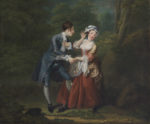 Casanova is the perfect icon for the job because he so vividly documented the mores and manners of his era in his autobiography, and because he was so widely traveled. Born in Venice, the opulent, permissive city with its stunning lagoon setting and famously elegant masquerade balls, as a young boy he went to boarding school and university in Padua. For the rest of his life he would travel the continent, alternating between prison stays for debt and morals charges and a dizzying array of careers from priest to gambler to playwright.
Casanova is the perfect icon for the job because he so vividly documented the mores and manners of his era in his autobiography, and because he was so widely traveled. Born in Venice, the opulent, permissive city with its stunning lagoon setting and famously elegant masquerade balls, as a young boy he went to boarding school and university in Padua. For the rest of his life he would travel the continent, alternating between prison stays for debt and morals charges and a dizzying array of careers from priest to gambler to playwright.
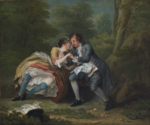 The son of an actress and a dancer, a jailbird and avowed libertine, Giacomo Casanova’s ability to seduce was not limited to women of all ages, degree of consanguinity to him and stations of life. He seduced his way into the highest echelons of ancien regime. He was invited to join the secret societies so favored by the aristocracy and was the toast of imperial courts from Constantinople to Saint Petersburg. Casanova navigated with equal ease the dark, greasy back alleys of the underworld and the gilded Rococo parlours of the rich and titled, and he wrote about it all in frank detail.
The son of an actress and a dancer, a jailbird and avowed libertine, Giacomo Casanova’s ability to seduce was not limited to women of all ages, degree of consanguinity to him and stations of life. He seduced his way into the highest echelons of ancien regime. He was invited to join the secret societies so favored by the aristocracy and was the toast of imperial courts from Constantinople to Saint Petersburg. Casanova navigated with equal ease the dark, greasy back alleys of the underworld and the gilded Rococo parlours of the rich and titled, and he wrote about it all in frank detail.
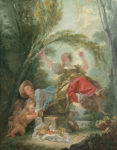 This is the first important exhibition outside of Europe to reconstruct the rich worlds Casanova inhabited. The cultural and political capitals of Europe — Venice, Paris, London, Russia — are all represented by the artworks and objects on display, as are the naughtier environments Casanova frequented — gambling halls, mistresses’ boudoirs, theaters. The exhibition is divided into four sections. Amorous Pursuits takes pole position, as any narrative centered on Casanova would have to, and it explores how the 18th century elite’s shifting attitudes towards sexuality were expressed in artworks by the likes of Tieopolo, Fragonard, Hogarth and Boucher.
This is the first important exhibition outside of Europe to reconstruct the rich worlds Casanova inhabited. The cultural and political capitals of Europe — Venice, Paris, London, Russia — are all represented by the artworks and objects on display, as are the naughtier environments Casanova frequented — gambling halls, mistresses’ boudoirs, theaters. The exhibition is divided into four sections. Amorous Pursuits takes pole position, as any narrative centered on Casanova would have to, and it explores how the 18th century elite’s shifting attitudes towards sexuality were expressed in artworks by the likes of Tieopolo, Fragonard, Hogarth and Boucher.
![Francesco Guardi (Italian, 1712–1793) "The Ridotto in Venice with Masked Figures Conversing [The Ridotto at Palazzo Dandolo], c. 1750. Oil on canvas, 30 × 41 1/4 in. (76.2 × 104.7 cm). Private collection.](http://www.thehistoryblog.com/wp-content/uploads/2017/09/Guardi_RidottoInVenice-150x108.jpg) The Theater of Identity focuses on depictions of the mask and theatrical pursuits, something Casanova was intimately familiar with as a Venetian, the neglected child of show business parents, and as an unparalleled master of self-invention, often crossing over into outright fraud. The Art of Luxury presents the decorative
The Theater of Identity focuses on depictions of the mask and theatrical pursuits, something Casanova was intimately familiar with as a Venetian, the neglected child of show business parents, and as an unparalleled master of self-invention, often crossing over into outright fraud. The Art of Luxury presents the decorative  arts of the period, from silver tableware to a men’s three-piece suit of velvet embroidered with silver thread, the kind of thing Casanova might have worn during his more successful stretches.
arts of the period, from silver tableware to a men’s three-piece suit of velvet embroidered with silver thread, the kind of thing Casanova might have worn during his more successful stretches.
The last section looks at The Adventure of Travel. Casanova by his own account clocked more than 40,000 miles in travel on crap roads and dangerous seas in slow conveyances. That was not a lifestyle for the faint of the heart in the 18th century. Some of the paintings on display depict the allure that might draw someone to risk life and limb on long journeys, idealized scenes of exotic beauties in foreign courts. One masterpiece, Canaletto’s Bacino di San Marco, captures the reality of Venice as a capital of international trade, its main harbour bristling with the  masts of ships flying many different flags. Then there’s a whole other category of reality: a gilt, painted and silk upholstered sedan chair that must have once carried the posterior of an Italian noble to and fro, although probably not so much on the rough roads as inside and between palaces.
masts of ships flying many different flags. Then there’s a whole other category of reality: a gilt, painted and silk upholstered sedan chair that must have once carried the posterior of an Italian noble to and fro, although probably not so much on the rough roads as inside and between palaces.
The exhibition runs at the Kimbell from August 27th through December 31, 2017. After it departs Texas, the show will move on to the Legion of Honor in San Francisco and then to the Museum of Fine Arts in Boston.
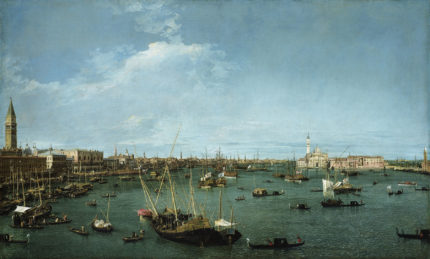
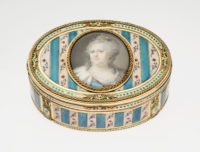
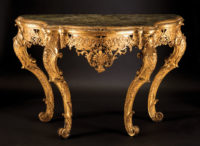
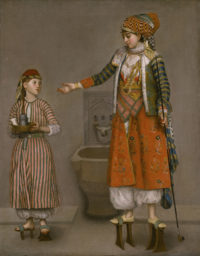
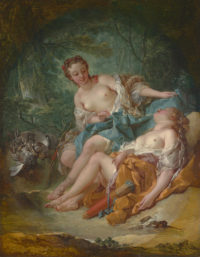
Referring to the painting by Liotard (bottom left): Similar to Giacomo, the painter was widely traveled as well. The Ottoman invasions into Europe had just been fought back successfully and step by step new connections could be established.
To dress up, drink and deal with something more or less “Turkic” became even ‘fashionable’. Liotard, however, spent indeed time in Constantinople. where he depicted ‘French’, ‘Levantinic’ and all kinds of women in Turkic dresses, but probably no ‘Frankish’ ones.
To the real Turks, contrastingly, everything ‘Western’ was ‘Frankish’, even Venetians (roughly a millennium earlier, it actually was). Thus, there seems to be something wrong with the title of that painting: According to other sources, that girl is indeed ‘Levantinic’ :love:
Oops, I always thought that Casanova was a literary character 😚
I love the idea of exploring how the 18th century elite’s shifting attitudes towards sexuality were expressed in artworks of Tieopolo, Fragonard, Hogarth and Boucher. And I would like to make another point. Even had Casanova not been born, those sexual perspectives would have been changing, and certainly would have been more explicitly expressed in art.
“La Nuit de Varennes” is a 1982 Italian/French film based on a novel that tells the story of a fictional meeting between Restif de la Bretonne, Giacomo Casanova, Thomas Paine and a lady in waiting to the Queen. They are all traveling together in a coach that is a few hours behind the one that is carrying King Louis XVI and Marie Antoinette in their flight to Varennes during the French Revolution, where they were found and returned to Paris. The role of Tom Paine is played by Harvey Keitel.